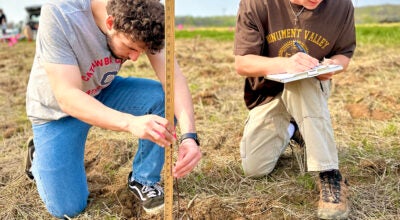Jeanie Groh column: Campus safety a priority for local colleges
Published 12:00 am Thursday, February 12, 2015
In the aftermath of mass-shootings at Virginia Tech, Sandy Hook Elementary School and a movie theater in Aurora, Colorado, safety is an ever-rising concern in public places.
The reality of these situations hit close to home last week when a professor was shot and killed by his ex-wife at the Arnold School of Public Health at the University of South Carolina.
Although the shooting at the University of South Carolina was isolated and a case of domestic violence, it still brings about the realization that these incidents can happen anywhere. Along with that realization comes a sense of urgency.
“Active shooter situations are on the increase,” said Tim Bost, director of campus security at Rowan-Cabarrus Community College. “Colleges have generally ramped up their security practices.”
Rowan-Cabarrus is no different.
Bost, who spent nearly 35 years in law enforcement with the Rowan County Sheriff’s Office, has overseen the college’s safety and security for more than three years and has begun implementing new safety measures recommended by a security survey completed in 2011.
As a sheriff’s deputy, Bost spent a lot of time moonlighting as security, as well as teaching law enforcement classes at the college.
His involvement with Rowan-Cabarrus made him very familiar with the campus and its specific needs.
Bost refers to Rowan-Cabarrus’ security measures as “layering.”
Adding layer upon layer of security measures creates a safer environment, he said.
The security measures recommended included things as simple as trimming bushes to publicizing emergency procedures and installing surveillance cameras.
Right now, Bost said, they’re working on their mid- to long-range goals.
“We have a lot of things in the works,” Bost said. “RCCC going through a lot of new construction and renovation.”
As the college completes those projects, they’re working in the security upgrades. For example, the college recently added its first security cameras on the North Campus. They plan to expand their usage of cameras from there.
They’re also working to limit access points to the college and its buildings.
While kindergarten through 12th grade schools can be very well controlled, colleges are almost “universally … open-doored,” Bost said.
By limiting the number of access points, the college is able to build “that layer of security on campus,” he added.
Rowan-Cabarrus is also focusing on making emergency communication a priority.
The college is using a new radio system to facilitate intercampus communication. They made the switch from an analogue to a digital system that now works between the school’s multiple campuses.
“This was a first for us,” he said. “It’s a pretty exciting thing.”
On-campus communication is a priority, as well. Each building on each campus has a building safety coordinator, who receive an “enormous amount of training,” Bost said.
These 43 individuals learn how to deal with an active shooter, inclement weather, use a fire extinguisher or conduct a fire drill.
“It’s a good program, and it’s working very well,” Bost said.
The building safety coordinators report to the campus emergency coordinator – one for each campus. They report to the campus site director, who in turn reports to Bost.
This system “makes the college feel more connected,” he said, adding that it provides better access to highly trained safety personnel.
“Here at the college, we have people trained who have the authority to make rapid decisions,” Bost said.
The college also employs security personnel whenever its campuses are open. Those personnel come from the Rowan County Sheriff’s Office, Kannapolis Police and Concord Police, as well as Allied Security, a private security company.
The college has 50 sworn and unsworn officers.
Rowan-Cabarrus isn’t the only college in the area with a detailed emergency plan. Catawba College utilizes an alert system that is able to text, call and email its students and staff. The college also hosts frequent crisis drills over the summers.
In an active shooter situation, “usually the damage is done before you can react,” Bost said.
He added that if a threat arises or a lockdown is issued, people should find the closest room with a door that locks. They should go in and lock the door.
The most important part of a lockdown is “Interior door control,” Bost said. “There’s a certain risk in going out and securing perimeter doors. Often active shooters are already inside of a building.”
“It is quite risky to go to perimeter doors,” he added.
Contact education reporter Jeanie Groh at 704-797-4222.


